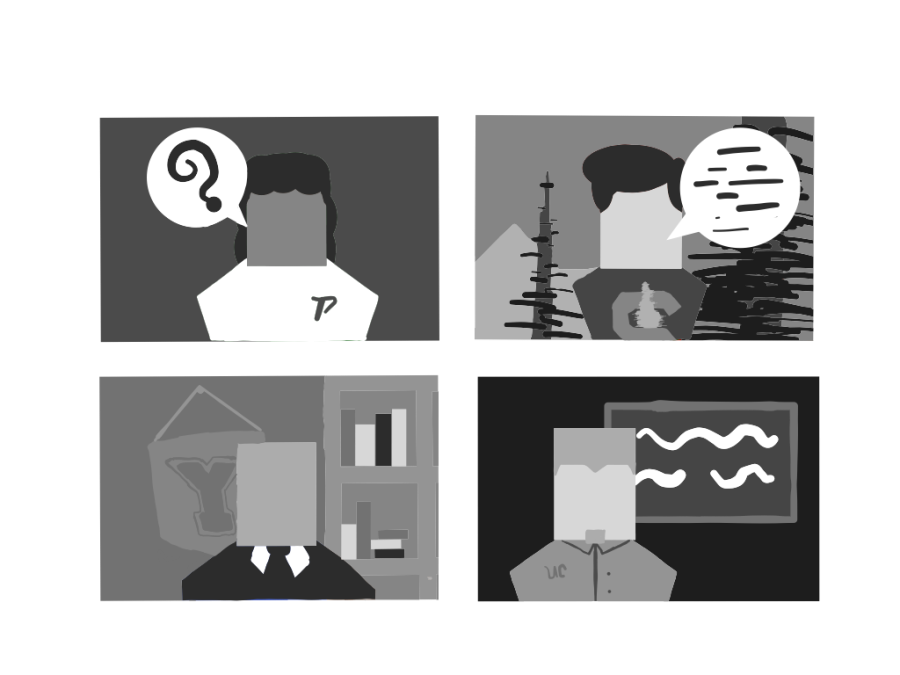It is 7 a.m. on a Monday morning and senior Lexi Gwyn is up preparing for a virtual college information session. Scribbling in her notebook, Gwyn jots down a list of questions to ask the school’s representative. While the information on the college’s website has given her some background information about life on campus, Gwyn feels to truly gauge if a school is a good fit, she needs to speak with the students and faculty that represent it.
“The information written on a school’s website is great, but it can really only get you so far,” Gwyn said. “My main thing is that I love talking to people, and asking a representative my own questions gives me a chance to sense if their love for the college is genuine and authentic.”
As the pandemic persists into fall, colleges have made several adjustments to their application process. Many have dropped standardized testing requirements, and applications now allow students to explain their circumstances during the pandemic. With colleges making changes seemingly every day, the application season for the class of 2021 has been like no other.
Perhaps the biggest change to the process has been the inability to physically tour campuses. While many schools have implemented virtual tours, Gwyn said that it is impossible to simulate the feeling of visiting the school in person.
“What we, as prospective students, miss from not being able to put our own feet on campuses is seeing the interactions that students have with each other.” Gwyn said. “We aren’t getting to feel the vibe of schools, which is a really important deciding factor for me.”
In lieu of college recruiters speaking to students in person, the College and Career Center has scheduled virtual Zoom visits. Despite being online, CCC adviser Janet Cochrane said these visits are more important than ever.
“I do think something is lost when students can’t meet with representatives in person, however, I was surprised at how well the conversation between reps and students went in the Zoom meetings,” Cochran said. “I think (virtual) college visits have become more important since student’s cannot visit campuses themselves; both the students and reps who attend the meetings get a lot out of them.”
Kris Tesoro, a regional recruiter from the University of Michigan, said it took time for the university’s Office of Undergraduate Admissions to adjust to giving presentations digitally.
“The transition to a completely virtual high school visit environment has definitely changed our approach to how we are able to effectively communicate with students,” Tesoro said. “During a traditional high school visit, we as admissions professionals are able to ‘read the room’ and be nimble with our messaging. In this virtual environment, we recognized that we needed to provide a virtual session where that information is clear and deliverable in meaningful ways.”
Regardless of how it is conducted, Tesoro said the information shared is crucial for students interested in Michigan.
“I believe that virtual high school visits play an important role in allowing prospective students the chance to connect with a representative from the University of Michigan,” Tesoro said. “This connection provides students a chance to review important admissions/financial aid information, such as deadlines and procedures, and also get a sense of the campus culture/community through the lense of the admissions representative.”
Sebastian Franco, a Freshman Admissions Counselor at UC Santa Barbara, says his office is doing everything they can to make up for the lack of campus tours.
“We understand the importance and value of visiting each campus a student is interested in as it can really provide an insight of what their college lives may look like,” Franco said.
This is why our ‘visits’ are more important this year than in the past. Even though it is not the same experience, we are able to provide a closer perspective on UCSB and answer questions a student may be curious about or would even have asked if they got the opportunity to visit campus in person.”
Both Tesoro and Franco have expressed their concerns for students with technology limitations.
“Our office recognizes the digital divide present in our society and provided a robust offering of virtual resources on our main admissions website if students were not able to utilize the zoom platform with their existing technology,” Tesoro said.
“Even though we are able to provide the same content and information on a Zoom platform, it is not the same experience for all,” Franco said. “Some students do not have great access to the internet or might have other challenges to attend the virtual presentation which is why I think we’ve encountered a smaller number of students attending our presentations. If possible, I encourage students to look around our website and take advantage of the resources we offer since they are all intended for students to gain a better perspective of UCSB.”
Cochrane offered her final words of advice for seniors still searching for information about particular colleges.
“(In addition to) attending as many of the virtual events that you can for each of the colleges, research colleges online–read their mission statement, look at their departments/majors/minors and campus life,” Cochrane said. “Read reviews in college guidebooks like the Fiske Guide, and websites such as niche.com or youniversitytv.com.”

